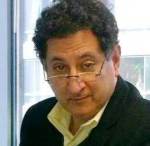Updated
Business Brief: Morocco and China Ink Pact to Build New City; Banking Sector Continues Strong Showing – Jean R. AbiNader
Jean R. AbiNader, MATIC
March 24, 2017
Building on King Mohammed VI’s 2016 trip to China, plans were announced for a major co-investment in an industrial city in the north of the kingdom that will provide jobs and development in the region. The Central Bank continued its conservative, and successful, management of interest rates as inflation, the national budget deficit, and the trade deficit are projected to rise slightly in 2017. Attijarawafa Bank was named African bank of the year by yet another business organization.
China Comes a Knocking. Repeating its formula for yet another successful foray into an African economy, China has agreed to form a joint enterprise with Morocco to develop an industrial and technology park, hosting hundreds of Chinese companies, to support manufacturing centers in the Tanger region. Chinese companies have previously been active in infrastructure projects such as the suspension bridge linking Rabat and Sale, among the largest of its kind in Africa. Of course, these parks also serve as zones for importing Chinese consumer electronics, textiles, parts, and housewares for sale in the local economy.
The principal partners are the Chinese aviation group Haite, BMCE’s Bank of Africa, and the government of Morocco represented by the Tanger-Tetouan-Al Hoceima regional authorities. The initial agreement calls for $1B investment annually for 10 years. The city, called “The Mohammed VI Tanger Tech City,” represents a significant escalation in Moroccan-Chinese relations. It will cover 2,000 hectares (approximately 5,600 acres) with a target of 300,000 inhabitants and a workforce of 100,000 drawn from the surrounding area.
The signing of the MOU, presided over by the King, took place in the Marchane Royal Palace in Tanger with presentations made by Moulay Hafid elAlamy, the acting Minister of Trade, Investment, and the Digital Economy, and Li Biao, President of the Haite Group. Mr. Biao noted that “the park will host hundreds of Chinese companies in numerous industrial zones including auto manufacturing, aerospace, aviation spare parts, electronic information, textiles and machinery manufacturing.” Minister elAlamy pointed out that Tanger was selected by the Chinese as a “competitive platform” for its regional center for manufacturing and distribution of its products, and that work would start in the second half of 2017.
For its part, the government of Morocco will continue its economic development projects in the north, including the high speed train scheduled to begin service within the next year, expansion of the free trade zones around TangerMed Port, and additional excavation of the deepwater harbor facilities. Minister elAlamy said that these investments will attract hundreds of multinational companies in addition to the Chinese companies financing the industrial city.
Financial Indicators are Steady. According to a report by NASDAQ, the Central Bank of Morocco, Bank Al-Maghrib, has positive economic projections for 2017, even as some indicators such as inflation and the balance of payments are slightly more negative. With a strong agricultural growing season, overall growth is pegged to increase by 4.3% and inflation will level off after a slight rise in the first quarter. Agriculture’s GDP contribution is expected to rise from 9.6% in 2016 to 15% this year. While this is good news for 2017, overall growth is expected to decline in 2018 as the price of phosphates remains low.
While inflation increased from 1.6% to 2.1% earlier this year, it is expected to drop to 1.1% later this year as the government is able to cut energy imports and subsidies and agricultural prices fall. The country’s budget deficit will reach 3.7% of GDP in 2017 before a slight decrease to 3.4% in 2018. Even though the trade deficit reached 18.2%, this still represents only 2.2% of GDP. Much of this is due to the decline in the price of phosphates, resulting in a 3.3% trade deficit. Overall, the news is good: the economy is steady and performing soundly resulting in controlled inflation, minimal increases in the trade deficit, and a more-than-manageable budget deficit.
Attijariwafa Bank continued its impressive role as a leading bank in Africa, garnering the “African Bank of the Year” award at the Africa CEO Forum. It is Africa’s fourth largest bank, operating in 24 countries with more than 7M clients and 16,000 employees. According to its website, the Forum provides a multinational platform for CEOs of African and international companies, financial specialists, investors, bankers, thought-leaders, and public sector leaders to exchange information and develop projects in Africa and internationally, and develop strategies to address the economic and industrial challenges facing the continent.
